Stars and STEM Stories
GLOBE Senegal: Teachers and Students Use Soil Protocols to Help Local Farmers
Supervisors and students from GLOBE/SERVIR clubs were trained in December 2024 in GLOBE soil protocols to help them discover the relationships between the soil and living beings and agriculture.
The supervisors of the Mbacké high school and Thilmakha high school
clubs, located in semi-rural areas, hoped to see their teachers’
pedagogical capacity strengthened so teachers could better support
students in carrying out GLOBE observations. The hope was that these
observations would, then, help local farmers in increasing their crop yield.
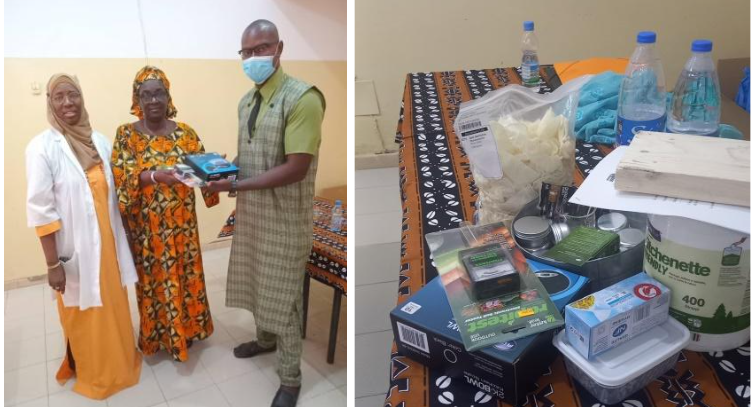
The equipment used in the training and observations was loaned by YLACES.
The site chosen for study was an open and sunny location where the inside of the pit and the different layers of soil (or horizons) were easy to see. Further work will be done on local farmland, and the YLACES grant will help students travel to these locations for testing and observations.
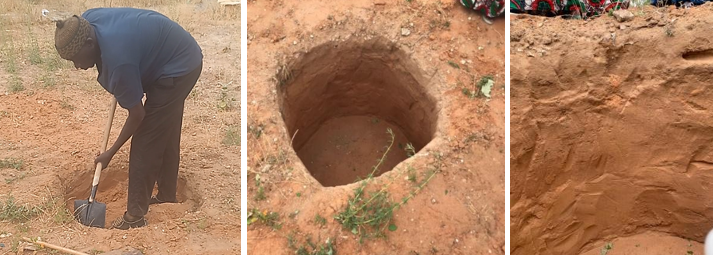
Soil profile
Supervisors and students took part in hands-on training using the following soil characterization activities:
- Taking GPS coordinates
- Digging a pit 1 meter wide and 1 meter deep
- Determining the number of horizons with the following attributes:
three samples were taken for each attribute:
- Depth
- Humidity
- Structure
- Dominant and subdominant color
- Consistency
- Texture
- Presence of pebbles, roots and carbonates
The application of this protocol in the field allowed us to determine two distinct horizons.

Soil characterization in the field
Practical Work on Soil pH and Fertility
Training participants studied the pH values of the horizons with a pH meter. The values obtained varied between 6.5 and 7, so the soil studied was neutral or close to neutral

Drying, sieving, and weighing soil samples with precision balances

pH paper and pH meter
Then, using an NPK test kit, a dry sample of soil was mixed with a solution, and nitrogen (N), phosphorus (P), and potassium (K) were extracted. The amounts of N, P, and K were determined by comparing the solution with a soil fertility kit color scale. Using the scale, samples could be determined to have high, medium, low, or zero fertility. These measurements were taken three times for each soil horizon. The findings showed that for both horizons, soil fertility is low. This is important data for local farmers, and our continued findings using these protocols will be shared with locals to help them figure out measures to take to increase their crop yield.

Fertility study: NPK content
Working with Local Farmers
After collecting soil data from farms, students enter that data into the computer and then print them out. This document is signed by the school director and officially handed over to the farmers. Information will be given to farmers in collaboration with a community farmer specialist who can offer practical soil improvement tips, which help farmers to change their farming practices to increase crop yield. Results will be shared with the GLOBE, SERVIR, and YLACES communities.
Participants
Meet all of the hard-working participants, below.
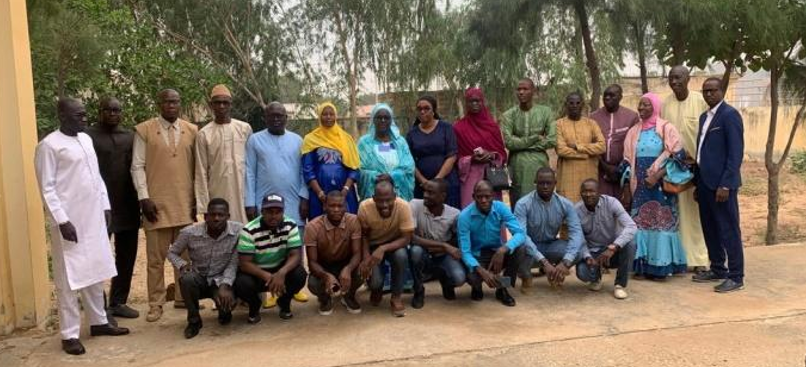
Educators
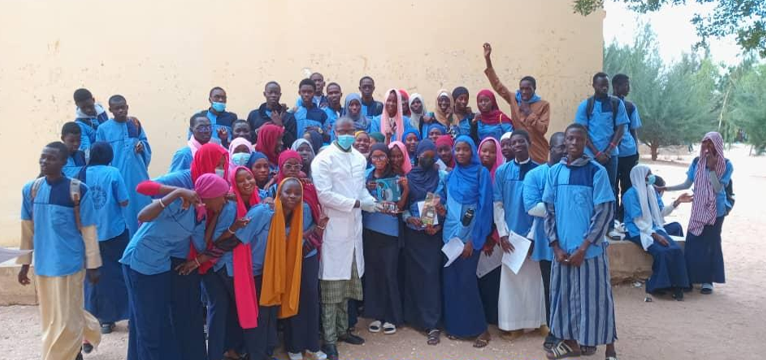
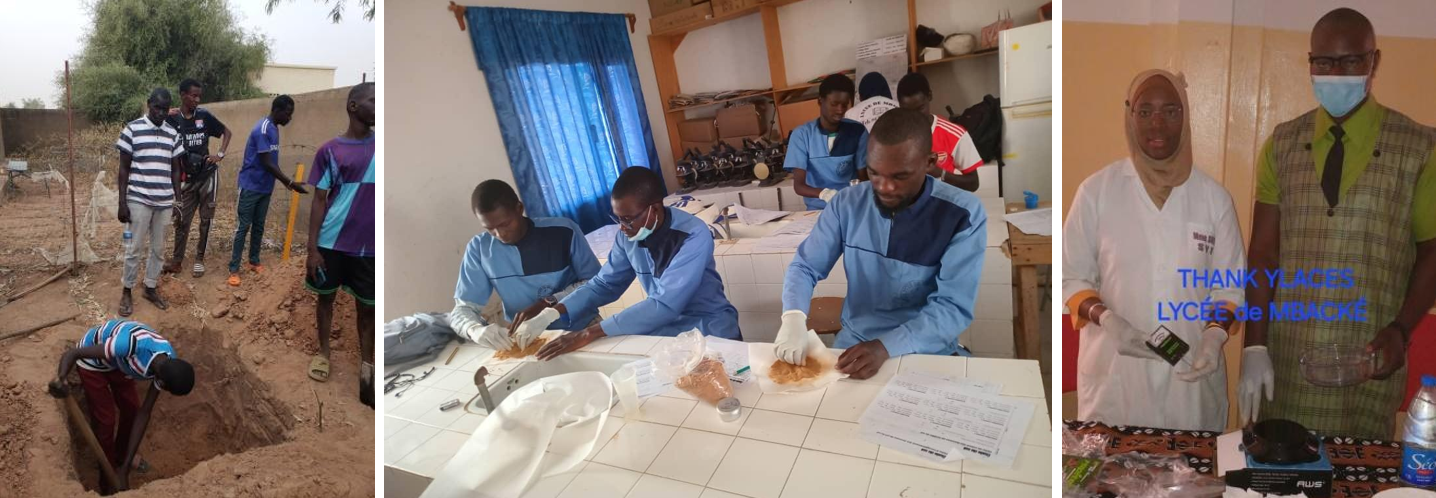
Participating students from the Mbacké high school
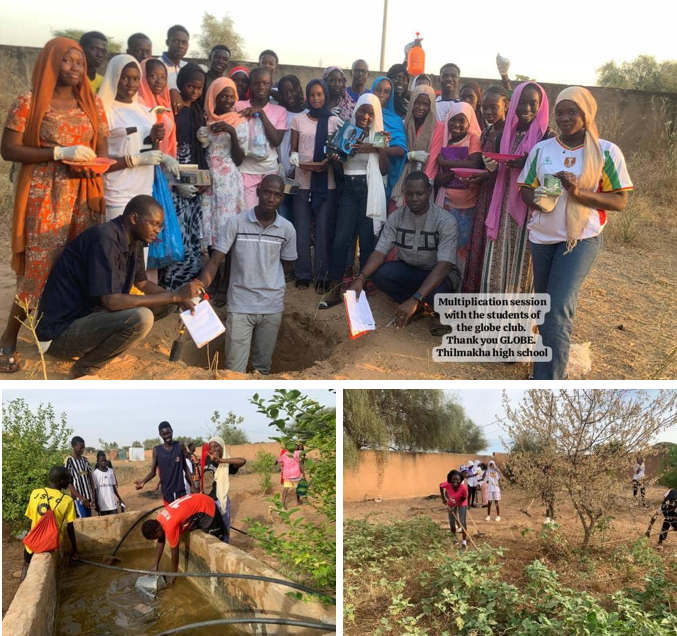
Participating students from the Thilmakha high school
________________________________________
*Since 2021, with the
support of the SERVIR program, Senegal has set up three SERVIR/GLOBE
clubs in Ferlo, an arid area in the north of Senegal. This year, we
added two new GLOBE/SERVIR clubs, and it is the YLACES grant that
allowed us to have the ground equipment of the two new clubs and the
means to travel to the farmers to improve agricultural yields.
The SERVIR program and the YLACES grant made it possible to purchase all the equipment in soil and to organize the GLOBE training workshops. They are the technical and financial partners of GLOBE Senegal.
Learn more about GLOBE Senegal.
Story contributed by and photos courtesy of Mme Ngosse Bousso Fall.





